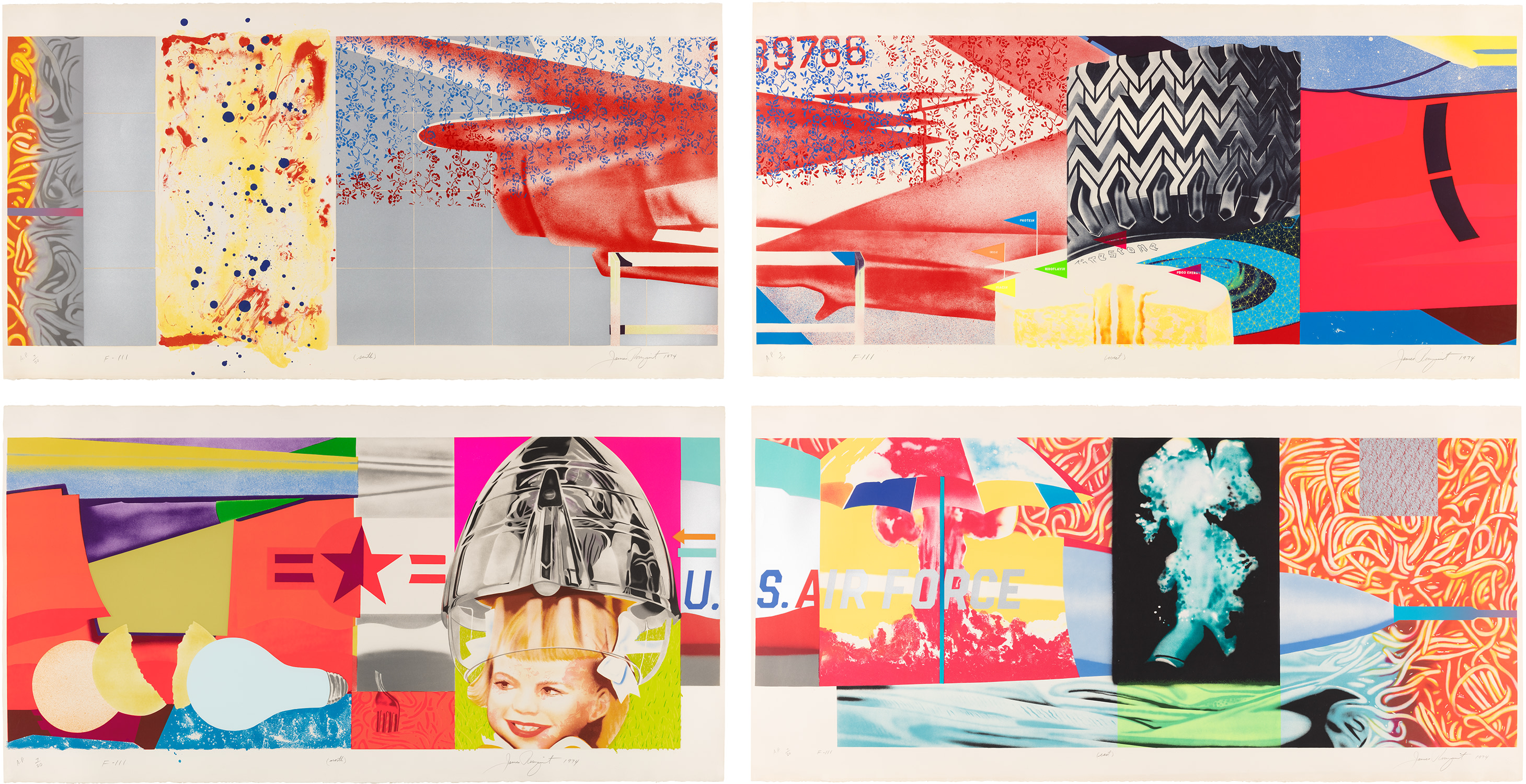
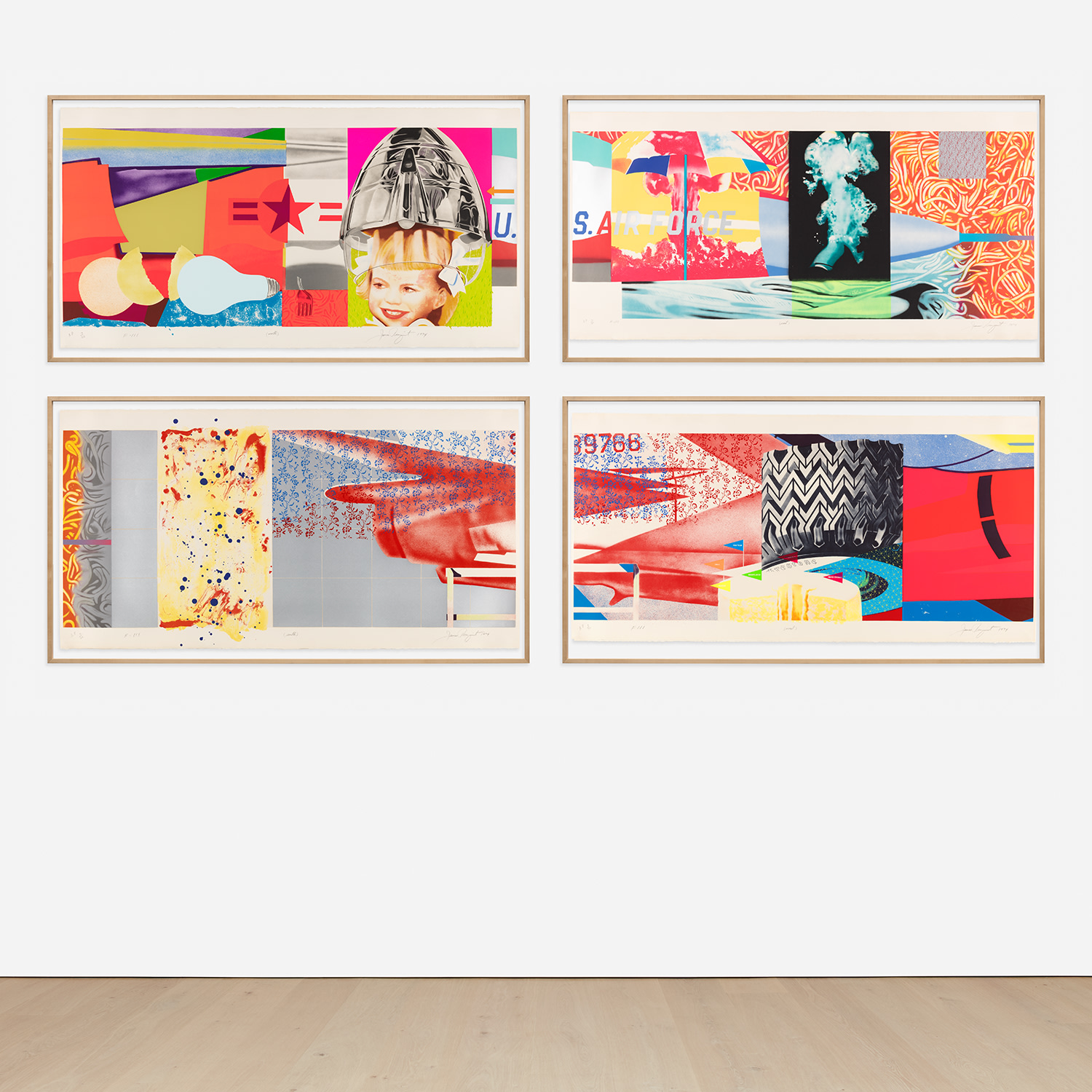
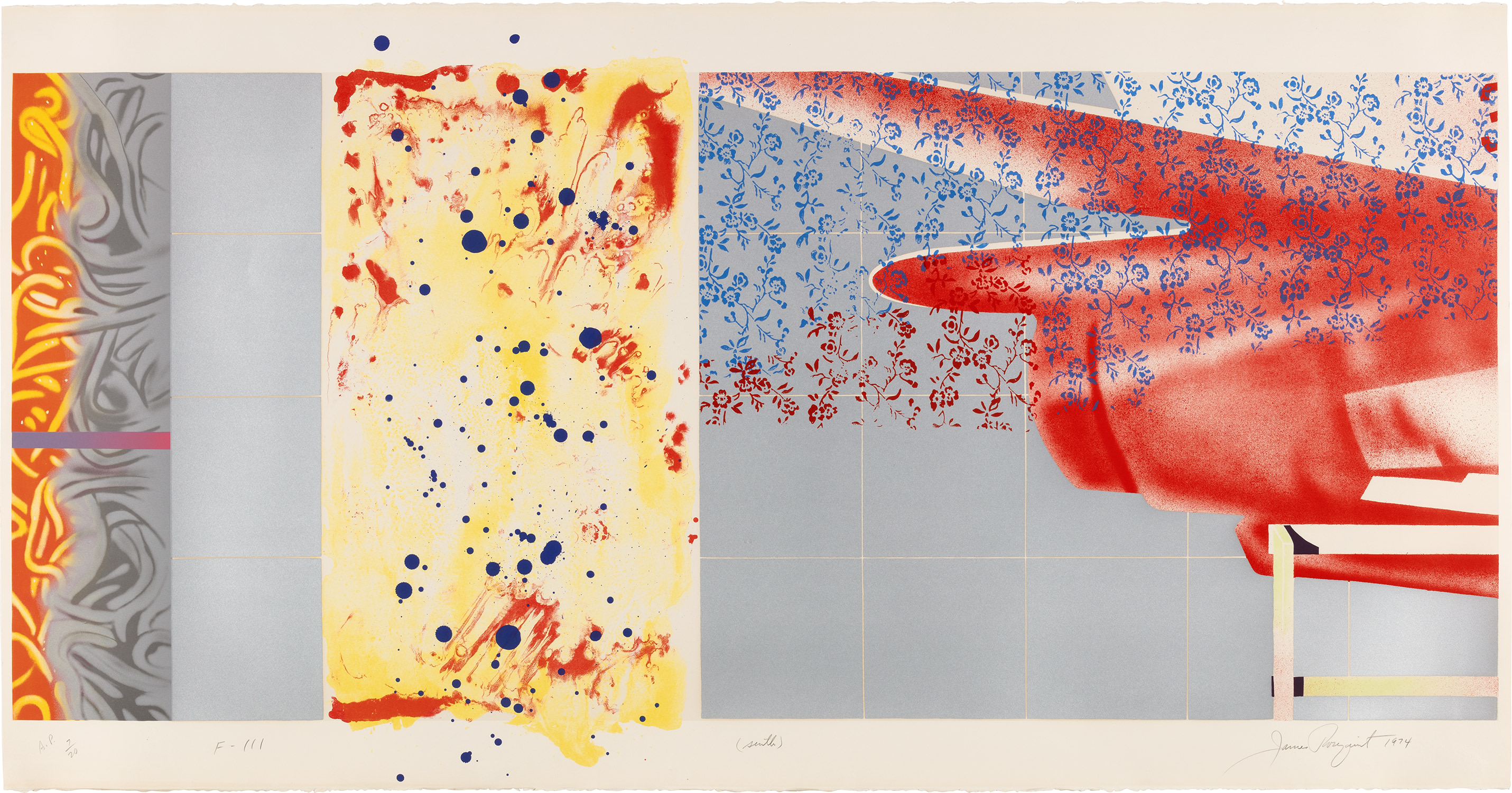
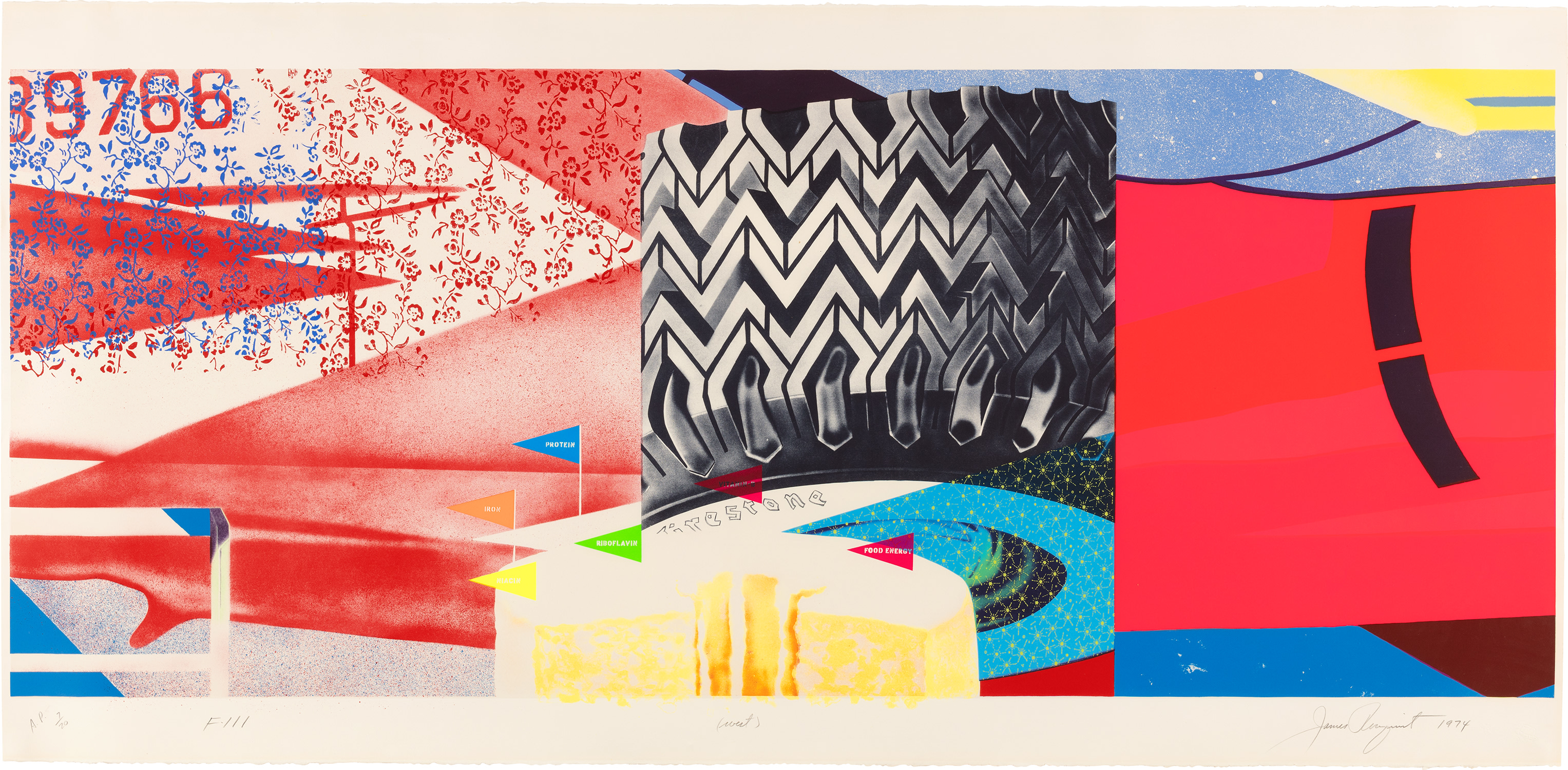
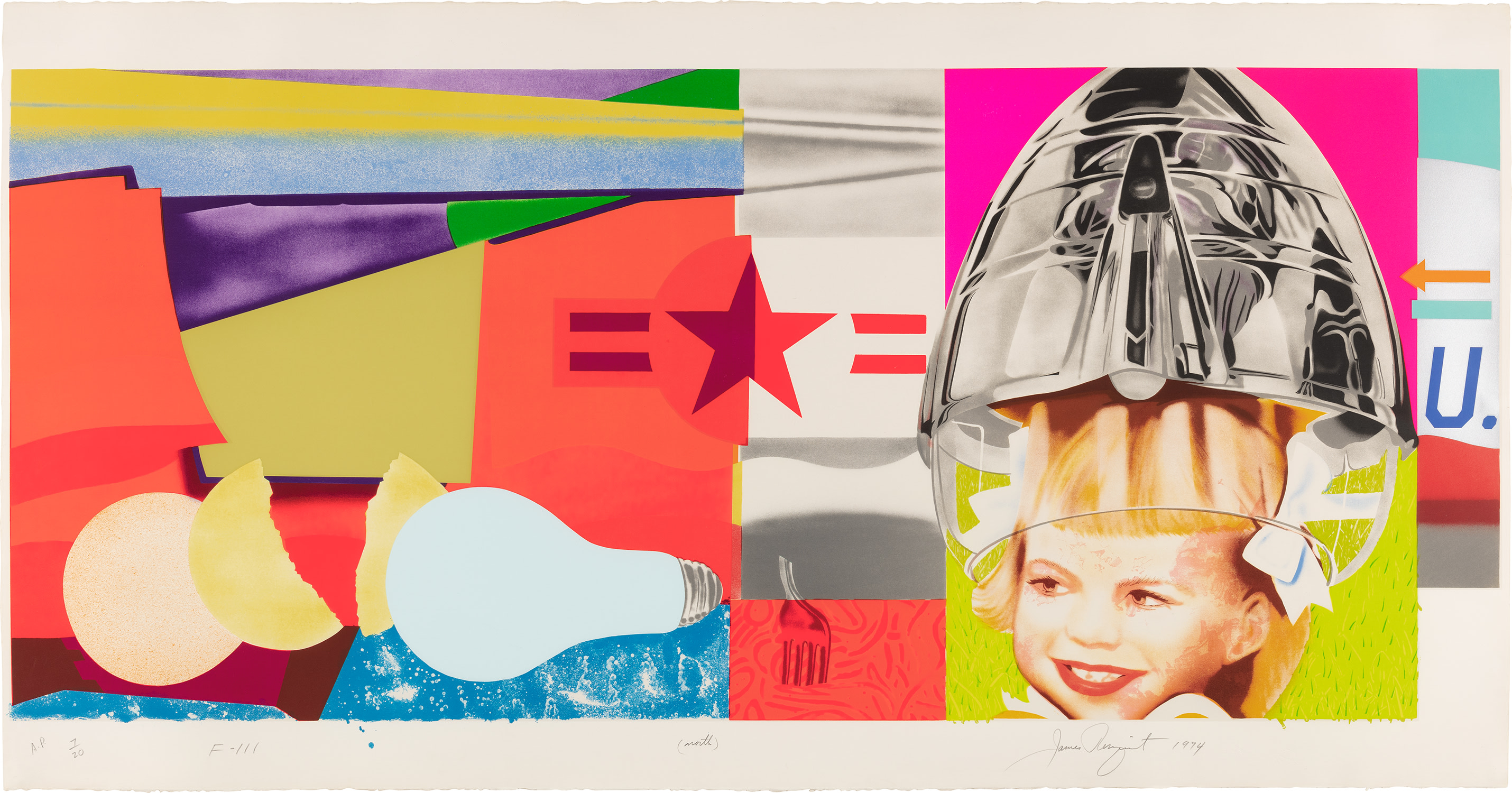







224
James Rosenquist
F-111 (south) (west) (north) (east) (G. 73)
1974
The complete set of four monumental lithographs with screenprint in colors, on Arches Cover paper, with full margins.
South I. 34 1/2 x 69 in. (87.6 x 175.3 cm)
West I. 31 x 74 in. (78.7 x 188 cm)
North I. 31 1/4 x 68 3/4 in. (79.4 x 174.6 cm)
East I. 30 x 74 1/8 in. (76.2 x 188.3 cm)
two S. 36 1/2 x 70 in. (92.7 x 177.8 cm)
two S. 36 1/2 x 75 in. (92.7 x 190.5 cm)
West I. 31 x 74 in. (78.7 x 188 cm)
North I. 31 1/4 x 68 3/4 in. (79.4 x 174.6 cm)
East I. 30 x 74 1/8 in. (76.2 x 188.3 cm)
two S. 36 1/2 x 70 in. (92.7 x 177.8 cm)
two S. 36 1/2 x 75 in. (92.7 x 190.5 cm)
All signed, titled, dated and numbered 'A.P. 7/20' in pencil (an artist's proof set, the edition was 75), published by Petersburg Press, London (with their blindstamp), all framed.